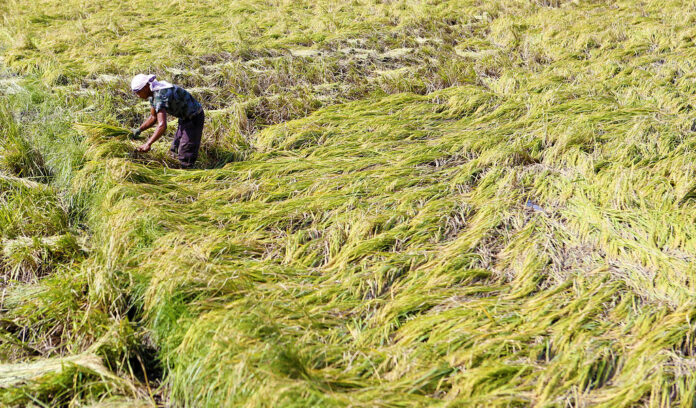Agricultural losses from Typhoons Uwan and Tino have surged past ₱4.14 billion, with assessments still ongoing, according to the Department of Agriculture (DA). Uwan caused the bulk of the damage at ₱3.17 billion, battering over 34,000 farmers and nearly 26,000 hectares of farmland. High-value crops—vegetables, spices, fruits, legumes, root crops, coffee, and cacao—sustained ₱1.52 billion in losses, while rice farms accounted for ₱1.47 billion across multiple regions in Luzon and Eastern Visayas.
Tino inflicted at least ₱968 million in losses, affecting 50,000 farmers and almost 18,000 hectares of crops. High-value crops lost ₱393 million, while rice damage totaled ₱336 million across regions from Calabarzon to Caraga.
The sugar sector was among the hardest hit: the Sugar Regulatory Administration estimates more than ₱1.2 billion in sugar losses in the Visayas alone, with over 53,000 hectares of cane fields affected and four mills forced to shut down temporarily. Damage was worsened by flooding aggravated by ash and lahar from Mt. Kanlaon.
Additional losses include up to ₱1 billion in abaca, coconut, and fisheries damage in Catanduanes, with abaca alone nearing ₱700 million.
The DA has mobilized emergency support—seed and fertilizer distribution, financial aid, fuel assistance, and replacement fishing gear—along with ₱251 million in crop insurance payouts and access to SURE Loans of up to ₱25,000.
Despite widespread devastation, the DA expects the Philippines to enter 2026 with a stable 70-day rice buffer, supported by the anticipated lifting of the rice import ban at the end of December. However, Agriculture Secretary Francisco Tiu Laurel Jr. cautioned that agricultural growth may slow in the fourth quarter due to extensive losses in corn, rice, fruits, and vegetables. New silos and cold-storage facilities are slated for completion next year to reinforce national food reserves.
Further assessments of agricultural and infrastructure damage continue.







